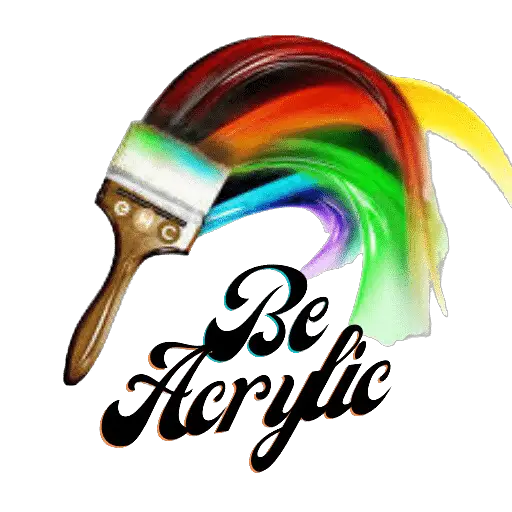For a beginner, there is a lot to learn in painting. Although skills and expertise can make you a good painter, knowing the correct application of different painting tools makes you a professional artist.
During my internship at the National Academy of Art and Science, I had a chance to work with Wendy Artin (a famous artist). Although things were not new for me, the way she introduced me to the usage of various supplies and tools was really impressive.
Most artists, including me, prefer acrylic paint for their projects. As a starter, you might think that only paint, canvas, and paintbrushes are enough, but it’s not the case. There are many other acrylic painting tools you have to consider.
In the post below, I’ll introduce you to different tools and supplies needed as a beginner for painting. I’ll also teach you how to use these tools to help you step towards a professional level.
Division of Tools And Supplies For Acrylic Painting
For the sake of easiness, I divide the tools into two groups. The first group contains the basic tools without which your painting is not possible or incomplete. They are also known as essential or must-needed supplies.
The second group is non-essential tools. You can proceed with your painting without including them, but of course, you’ll not be able to get desired results or achievements.
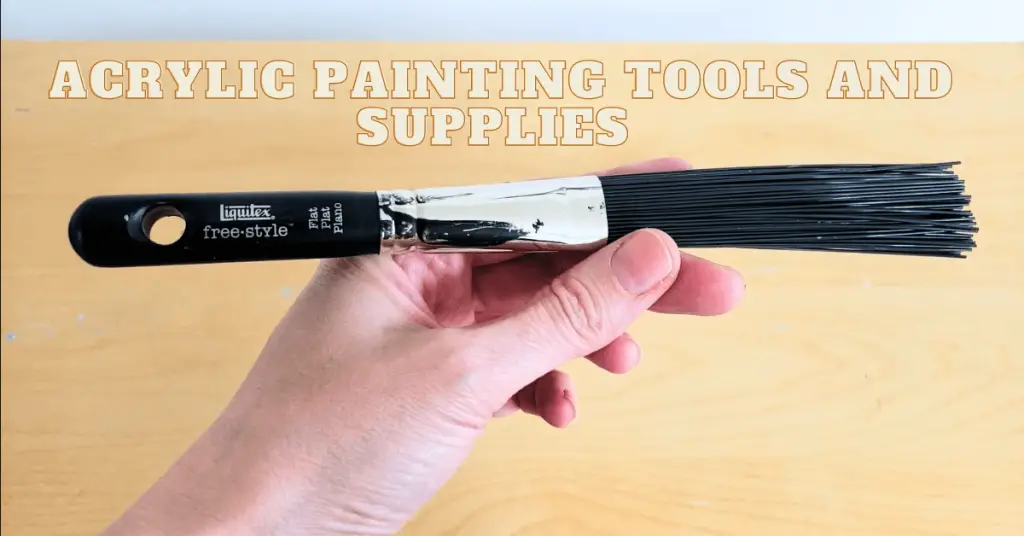
Group 1: Acrylic Painting Tools And Supplies (Essential)
The list of all the essential tools and supplies needed for painting is as follows:
- Acrylic Paint
- Paintbrush or Roller
- Painting Surface
- Acrylic Paint
Without dye or paint, you can’t go with painting or drawing anything. Acrylic paint is a medium that provides you with smooth, durable, and long-lasting colours. The paint is water-based, making it the first priority when it comes to going for fast-drying paints.
You can apply it over a range of surfaces like canvas, metal, wood, concrete, and so on using a paintbrush.
- Paintbrush
You’ll definitely need a vehicle to transfer paint from the container or tube to the canvas or any painting surface. Paintbrushes are of different types, ranging from round to flat brushes and angled to fan brushes.
Every brush has a specific usage. For example, a round brush is used for detailing, while a flat one is used for filling large sections.
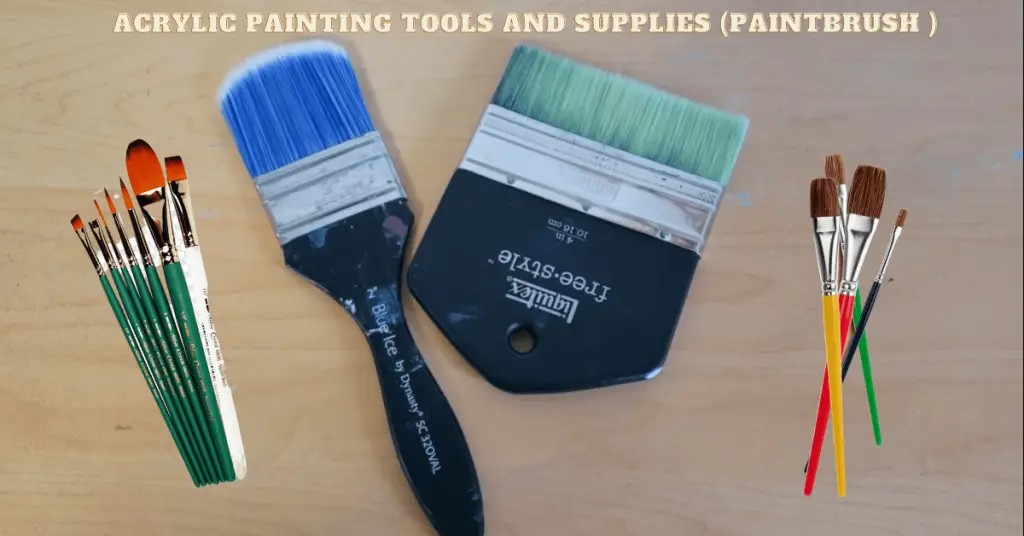
An alternative to the paintbrush is a roller. It is mainly used for painting over large sections and getting an even texture.
You should clean your paintbrushes thoroughly to maintain their health and performance so you’ll not need to buy new ones frequently.
- Painting Surface
The third main supply you need for painting is a surface. Canvas is a commonly used surface for acrylic painting. It is usually made of fabric material and works well with water-based colours. However, it needs to be primed to get desired results.
Other painting surfaces may include hardboard, metal, fabric, wood, cardboard, styrofoam, watercolour paper, glass, and so on. All these surfaces have different natures, hence requiring different preparations and practice.
Group 2: Acrylic Painting Tools And Supplies (Non-Essential)
Here is a list of acrylic painting tools and supplies with their names.
- Primer
- Sealer
- Palette knife
- Easel
- Colour palette
- Colour shaper
- Pencils
- Brush cleaner
- Storage gears
- Protective gears
- Cups and jars
- Masking tape
- Acrylic medium
- Airbrush
- Rags and towels
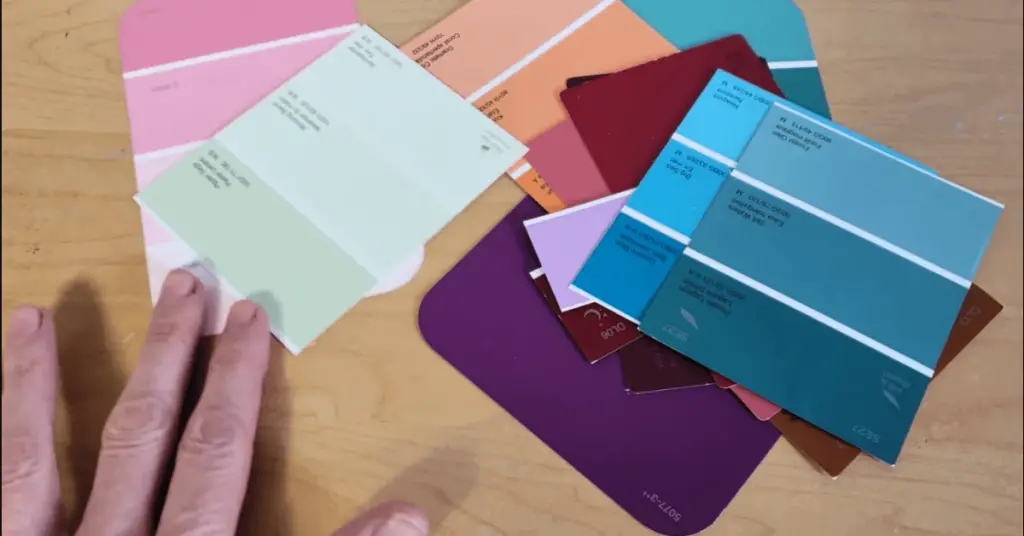
- Primer
What is a primer? It is a type of paint used as a base coat for protecting the main coat of paint from peeling and flaking. It is also used to make the surface even and smooth. Acrylic primers usually have black or white colour.
How to use a primer? It can be used by applying it over a surface with the help of a flat brush or roller. It is usually recommended to use primer along an isolation coat. It should be allowed to dry for at least three hours.
- Sealer
What is a sealer? It is a type of stain used over a painted surface to make it resistant to harsh elements and weathering. Sealer enhances the lifespan of a painting.
Clear acrylic sealer, polyurethane, or varnish are examples of some commonly used sealants.
- Palette Knife
What is a palette knife? A palette knife is a tool that is generally made of metal and has a flat and flexible blade. It is used to spread and mix the paint. Moreover, it is utilised to apply paint to canvas.
Palette knives are commonly used in oil and acrylic painting that involves thick and heavy paint. Some artists also use palette knives to create textured or abstract effects in their paintings.
They are available in different shoes and sizes. You may choose the one that suits your style of painting or your requirement.
- Easel
What is an easel? A canvas easel is a type of stand or support used to hold a canvas or other painting surface while it is being worked on. It normally consists of a frame or tripod that carries and holds the canvas in place and can be adjusted to different angles and positions.
Without an easel, painting on canvas is quite challenging. It helps you work and focus without being worried about distracting your mind.
Canvas easels are commonly used by artists and painters for creating new artwork or displaying finished paintings. They are made of a variety of materials, such as wood, metal, or plastic, and come in different shapes, sizes, and styles to suit your needs.
- Colour Palette
What are colour palettes? A palette is a tray of plastic, glass, wood, or a disposable material used for holding different colours of paint. It consists of wells which are used for separating paint medium.
Palettes are not used only for carrying paint but also help in mixing them. Wet palettes are used to increase the dry time of acrylic paint. They retain moisture in paint. In simple words, colour palettes ease your artwork and paint job.
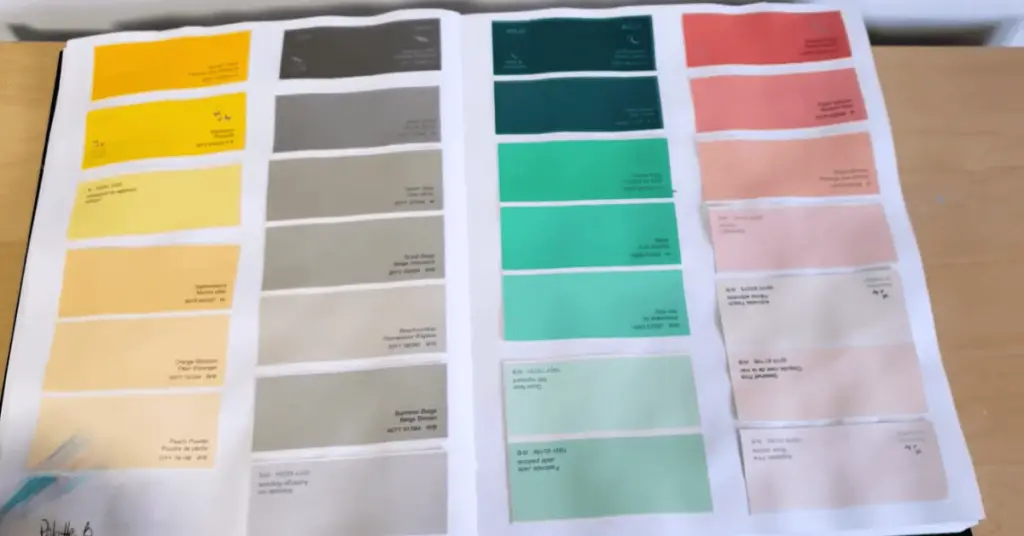
- Storing Tools
You must store your painting tools using special items. A jar is a good option for storing your paintbrushes. A roll holder made of fabric is another choice to carry your painting tools along with you.
A plastic organiser or container is also suitable for keeping the paint tubes and relevant supplies. You may find these storing materials at any hardware store or online.
How to store acrylic painting tools? It is best to store painting tools in a cool and dry place. This will help to prevent rust and deterioration. Avoid storing these tools in damp basements or garages, as this can cause rust and mildew to grow. Another good practice is to clean and dry your tools after each use before storing them.
- Colour Shaper
What is a colour shaper? It is a type of painting tool that is used for applying and blending acrylic paint. It has a flexible rubber tip that can be shaped to produce different effects. It comes in various sizes.
It works well with creating fine lines, broad strokes and textured surfaces. It is usually used by painters and artists for creating detailed work. Moreover, it can be used to paint the areas that are difficult to reach.
- Pencils
Some of our paintings require details which can be brought up by using pencils. They are usually used for lettering, naming and lining. Moreover, they help in sketching a design which makes our painting easy.
I usually draw a rough sketch or design whenever I’ve to go for a portrait. They eliminate the probability of errors as you can erase the pencil marks.
- Paintbrush Cleaners
What do you mean by brush cleaner? It is a product used to clean and maintain the condition of the paintbrush. It is available in the form of a liquid, spray, and soap. Alcohol and vinegar are examples of these cleaners.
They help remove paint residues, dirt, and oils from the bristles of the brush, which helps to extend the lifespan of the brush and maintain its effectiveness.
Some brush cleaners contain conditioning agents which keep the bristles soft and fresh.
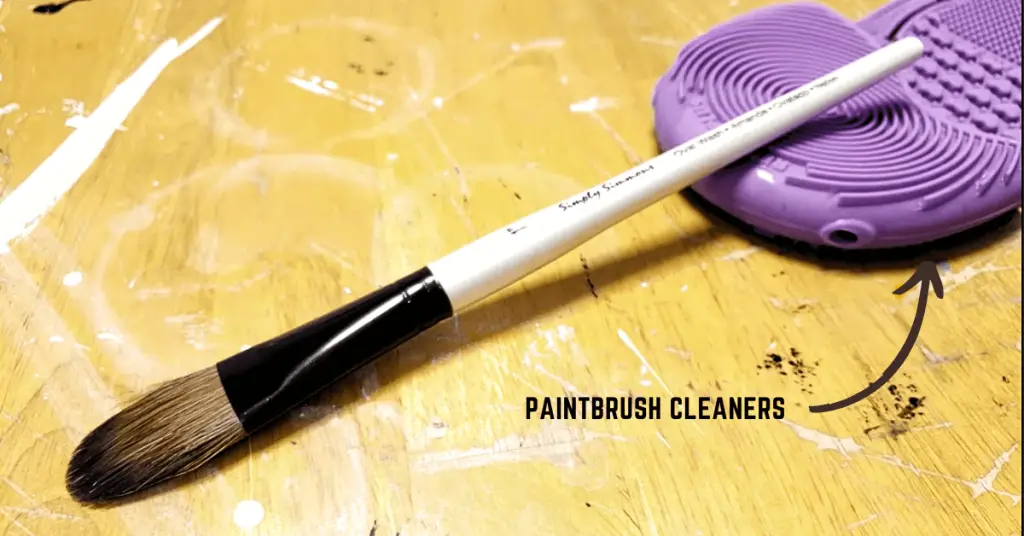
- Protective Gears
If you are a regular painter, you need to get some protective gear to protect your cloth, eyes, nose, and mouth from the paint stains and it’s fumes.
An apron is a washable cloth used during painting to protect your clothes from spills and stains. Goggles and masks are used while dealing with aerosol painting. Gloves are also recommended for the safety of hands.
- Spray Bottles
You’ll need spray bottles to get some moisture. They are required when you have to thin down acrylic paint with water. Moreover, these sprayers are needed for wetting brushes.
You may carry alcohol in these bottles for cleaning purposes or use them for spray painting.
- Cups And Jars
You will need various cups and jars depending on the size of your project and demands while painting. Plastic or glass cups or jars with airtight lids can be used to mix and store paint. You’ll need water jars for holding water and cleaning brushes.
When selecting cups and jars for painting, it’s important to consider the type of paint you will be using as well as your intention. For example, if you’re using acrylic paint, you may want to select jars with airtight caps to prevent the paint from drying out.
Additionally, if you’re a beginner, you may want to start with plastic cups or jars, as they are more affordable, disposable and less likely to break.
- Acrylic Mediums
You’ll need acrylic mediums to manipulate acrylic paint and bring its consistency according to your requirements. Acrylic mediums are the products used to alter the properties of the paint.
For example, retarders or extenders are the mediums that can extend the dry time of acrylic paint. Another example is paint thinner, which is medium to thin down the paint.
- Masking Tape
What is masking tape? Masking tape, which is also known as painter’s tape, is a type of adhesive material that is made from thin and easy-to-tear paper. It is coated with a pressure-sensitive adhesive.
It is usually used in acrylic painting to mask off areas that are to be painted, such as trim or windows. You can also use it for labelling, bundling, and a variety of other tasks. Moreover, it is a suitable solution for temporary glueing.
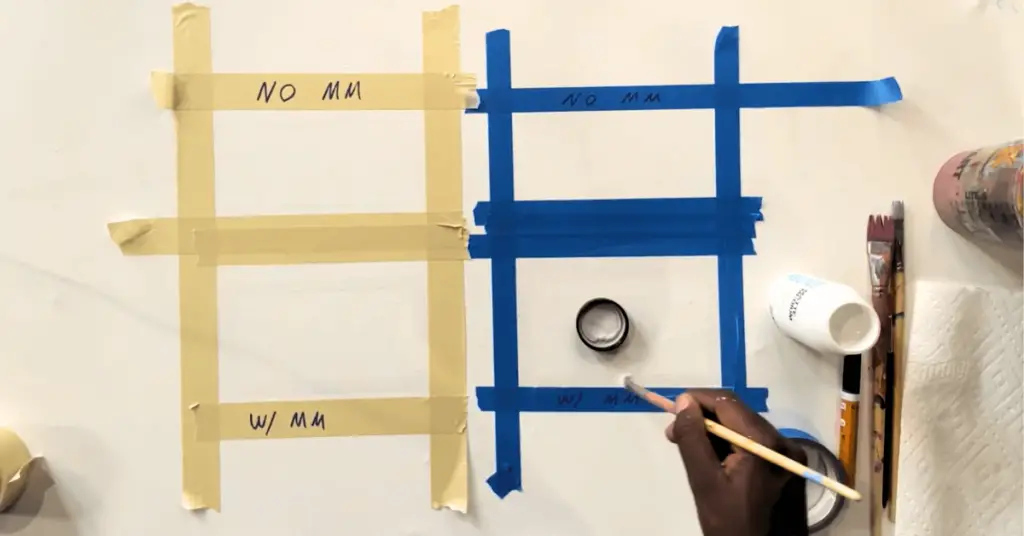
- Rag and Paper Towels
Rags and paper towels are both common cleaning supplies. What is a rag? Rags are generally made of cloth, such as old t-shirts or towels and can be used for wiping down surfaces or getting rid of spills.
What are paper towels? Paper towels are disposable and absorbent paper sheets that are usually used for drying hands or cleaning up spills and debris.
Both of them are part of your acrylic painting supplies and have their own pros and cons. Rags can be reusable, but paper towels are disposable and easy to use and manage.
- Airbrush
What do you mean by airbrush? It is a small, air-operated tool that sprays various media, like paint, ink and dyes. Spray guns are examples. It is a convenient way of priming, sealing or painting a surface and saves you time. You have to mix acrylic paint for the airbrush in order to use it more smoothly.
It utilises a hose to connect to an air compressor or canister of compressed air. The user can control the amount of paint discharged by adjusting the air pressure and distance from the surface being sprayed.
FAQs
What tool is used to mix acrylic paint?
You can mix acrylic paint with a palette knife or stirrer. The paint can be poured into a bowl, palette, or container for mixing.
What do you need for an acrylic painting?
As a beginner, you need a canvas, acrylic paint, a stand or support, a paintbrush, mixing trays, water, and rags. You may need various other tools, mediums, and products depending on your painting requirements.
How do I start acrylic painting?
The very first thing to start acrylic painting is passion. However, you will require some basic tools and equipment along with a few chemicals and products.
Conclusion
Acrylic painting is not limited to some specific rules; it is an adventure where you learn every day and discover new art by practising. You may invent new tools or use traditional acrylic painting tools and supplies.
It’s not about the tools only; you’ll need expertise and skills as well to get the ideas in your mind on the canvas. I believe I have discussed all the things necessary for starting painting. However, if I have missed something, please mention it below in the comment.
Thank You!
- How To Buff Acrylic Enamel Paint In 5 Easy Steps? - February 2, 2024
- How To Make Acrylic Paint More Opaque? 10 Effective Methods - February 1, 2024
- How To Sketch On Canvas Before Acrylic Painting? Draw Like a Pro - January 31, 2024
